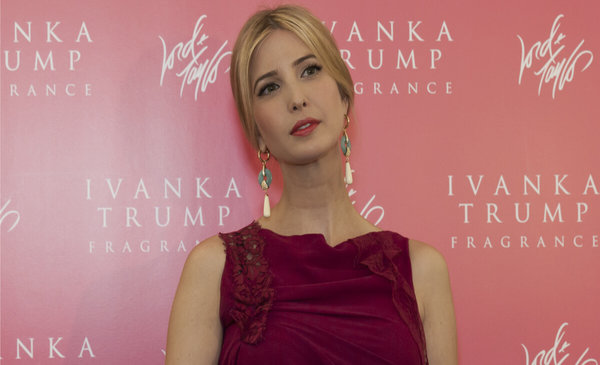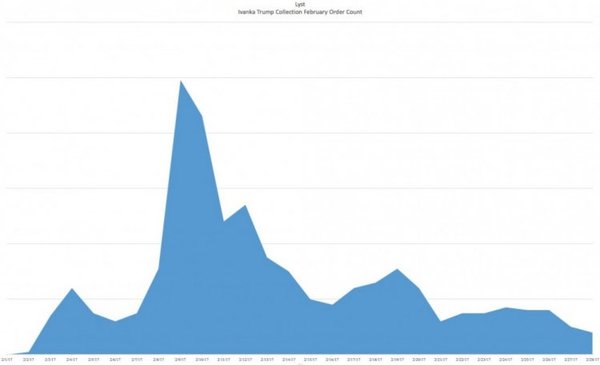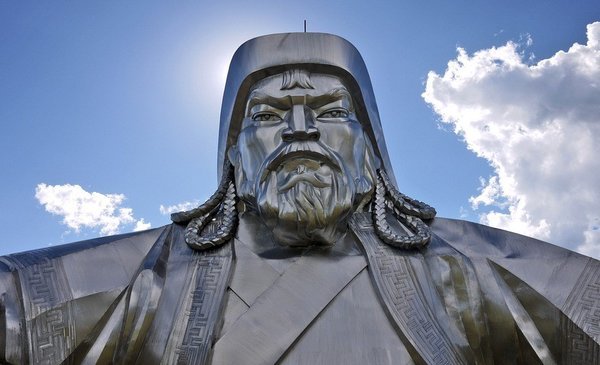
Ten years ago a young American entrepreneur and business school graduate took a gamble. Frustrated with jewelers who appeared to exclusively target male customers when promoting female jewelry, she set out to create a collection of rings, necklaces and bracelets that were inspired by and created for successful modern women who choose their own jeweler.
A year later and the success of the initial business led her to extend her brand into women’s footwear, then accessories and finally fashion. Distribution in the top American department stores followed and by 2013, only six years after she launched her brand, the company was reportedly generating $250m in revenues.
And then her dad became President and everything changed.
Ivanka Trump might have thought that the first 10 years of her Ivanka brand were tumultuous, but nothing could have prepared her for the past six months. First, her father was recorded extolling the virtues of grabbing women by their genitals. In response, a San Francisco based web designer, Shannon Coulter, started a campaign called #grabyourwallet. Coulter listed each and every brand that had any formal business connection with Donald Trump and his family and encouraged angry women to boycott all of them until those links with Trump were severed.
Among the brands targeted was Ivanka and, despite the fact most high-end stores stocked some of the brand’s products, it was the department store Nordstrom that quickly became the main target for female ire. Initially the store defended its right to offer shoppers a choice. Then it announced in February that due to the brand’s poor sales performance in 2016, it would not be buying any Ivanka stock for the upcoming season.
President Trump was unhappy with this turn of events and resorted to Twitter, first from his private account and then from his official presidential account. He tweeted that his daughter had been treated “unfairly” by Nordstrom and that the outcome was “terrible”, exclamation mark.
Trump’s senior political advisor Kellyanne Conway was challenged about the apparent ethical quandary of a president wading into a trade dispute involving his own daughter. Conway responded by openly promoting the Ivanka brand on live national TV.
“Go buy Ivanka’s stuff, is what I would tell you,” Conway exhorted a clearly alarmed political interviewer. “It’s a wonderful line. I own some of it. I fully…I’m going to just, I’m going to give a free commercial here: go buy it today, everybody. You can find it online.”
Political Storm
Nordstrom, the usually low-profile department store, was increasingly and uneasily finding itself entering the eye of a political storm. The company’s decision to delist Ivanka was rapidly becoming one of the most debated topics on American news and was even discussed during presidential press briefings. In apparent desperation Nordstrom released a statement describing the “great relationship” the company had with Ivanka Trump but pointed out that sales of the brand in 2016 had “steadily declined to the point where it didn’t make good business sense for us to continue with the line for now”.
But it was too late for rational, objective argument. This, after all, is America 2017. For left-wing anti-Trump zealots the Nordstrom/Ivanka case was clear evidence that the President continued to defy ethical requirements to separate his business interests form his presidential affairs. For right-wing Trump supporters it was another example of liberal bias against Trump and his daughter and they applauded his defense of his child.
Saturday Night Live weighed in with sketches in which Trump’s press secretary is seen hawking Trump merchandise on live TV and a more serious take-down in which Scarlett Johansson plays Ivanka in her own perfume ad, which, as the ad reveals at the very end, is called Complicit.
With so much negative publicity and the boycott beginning to have a genuine influence on distributors there has been widespread speculation that the Ivanka brand is “in crisis”. As the Washington Post asked in February: “How exactly did the Ivanka Trump brand fall so hard, so fast – particularly in the Nordstrom ecosystem? And where does the brand go from here?”
Given that Ivanka’s target market is young professional women aged 25 to 34 and that this demographic is two thirds opposed to the Trump Presidency those questions do appear to be pertinent.
Awareness Trumps All
But dig a little deeper and it’s clear that the Ivanka brand is going to win big not despite, but because, of the scandal that now surrounds the brand. Ivanka Trump is about to triumph for two major reasons. First, most marketers underestimate the power of brand awareness.
Your average CMO is so obsessed with missions and beliefs and purpose they have entirely overlooked the most important brand building block of all: awareness. If the customer does not know you exist then all other perceptual and behavioral bets are off. Most brands have tiny brand awareness among their target market but they are unaware of this deficit because they do not measure or track their brand properly in the first place.
Even if you have awareness, whether the brand is salient to a shopper as she gazes around a department store or looks at the blinking cursor against a blank box on Amazon is an entirely different matter again. Put simply, unless you’re a brand like Ford or Apple, most of your target customers do not know that you exist.
The Ivanka scandal has propelled the brand to extremely high levels of brand awareness. For a brand that prior to last year would have been looking at sub-1% unaided awareness among its target shoppers that is a rare and invaluable coup.
At this point, however, you might want to argue that awareness might be high but the associated image that new-found awareness is attached to will turn off a significant number of these newly cognizant customers. And you’d be right. If the polling numbers are correct around two thirds of the target market who now know about the Ivanka brand are also repelled by it.
But so what? There are 20 million women in America aged between 25 and 34. Until now almost none of them knew about the Ivanka brand. We can now assume that most have heard of it and most disapprove. But that still leaves us with a fertile, brand aware and entirely positive army of just under seven million American women who are suddenly hell-bent on buying Ivanka items.
Triumph Through Targeting
That sudden surge might explain the remarkable spike in sales that Ivanka recently experienced. At the start of the year, for example, the brand languished in 550th place for orders on Lyst.com – the largest fashion ecommerce site in America. But by mid-February, when the Ivanka debate was propelling the brand to its “crisis”, it became the 11th most popular brand on the site. “We’ve never seen such a large uptick,” a Lyst spokesperson explained earlier this week. “Typically, she’s not in our top 100 sellers.”

Orders of Ivanka branded goods on Lyst.com, February 2017 (Chart: Lyst)
Again, there is a good lesson here for marketers. Don’t try to make everyone happy. You’ll end up becoming vanilla and while nobody hates vanilla, it’s never the flavor that anyone chooses when there a dozen options at the ice cream shop. Too many marketers practice their art too conservatively. You can’t make everyone happy so focus on the people you can delight.
Ivanka Trump does not need everyone to love her brand. What she needs is everyone to know it exists, to know it stands for something and for a small segment of the market to find that something attractive enough to make a purchase. And that’s exactly what happened in February. She created enormous awareness, enormous antipathy and enormous desire and made money as a result.
The only catch, and of course there has to be one, is that the Goddess of Marketing giveth and taketh away in equal measure. The political firestorm about scandals and boycotts is fading as America becomes desensitized to the Trump presidency. And as the furor fades, so too does brand awareness. Apparently after a gigantic February, sales of Ivanka products have dropped somewhat, although they are still significantly ahead of 2016 numbers.
Perhaps a new scandal is what’s needed to create the next sales spike.
This thought piece is featured courtesy of Marketing Week, the United Kingdom’s leading marketing publication.
Don’t let the future leave you behind. Join us in Hollywood, California for Brand Leadership in the Age of Disruption, our 5th annual competitive-learning event designed around brand strategy.
The Blake Project Can Help: Disruptive Brand Strategy Workshop
Branding Strategy Insider is a service of The Blake Project: A strategic brand consultancy specializing in Brand Research, Brand Strategy, Brand Licensing and Brand Education
FREE Publications And Resources For Marketer






















